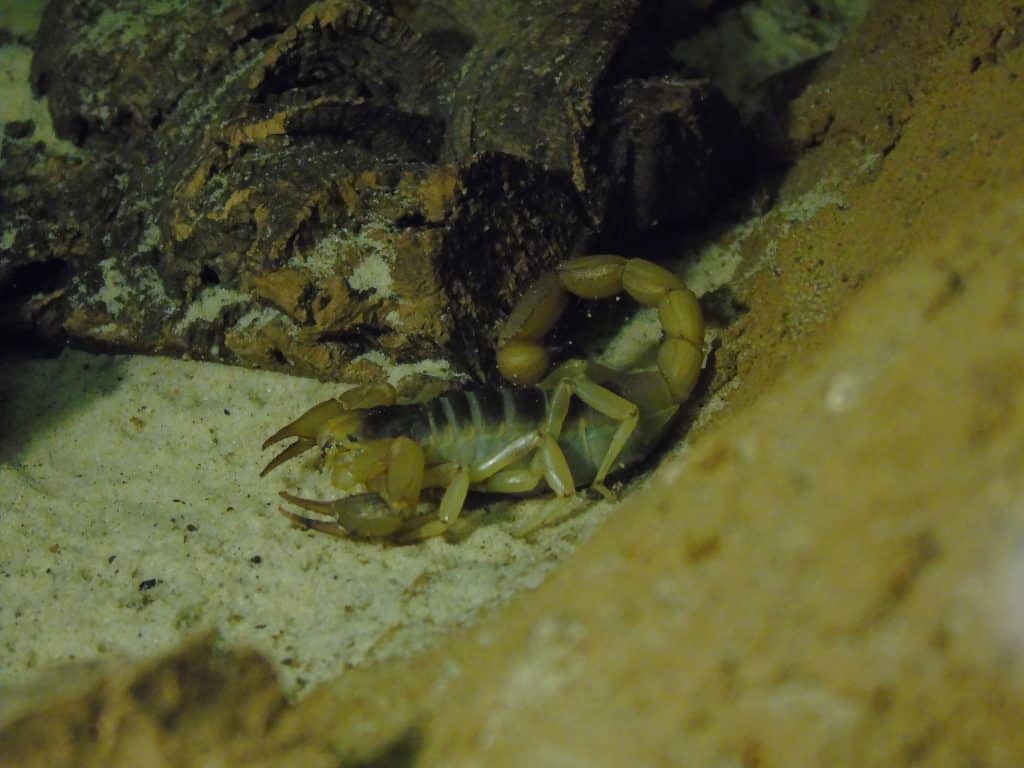So today I’m going to introduce you to some of our smallest carnivores. You may have already visited ‘the bug garden’ here at Wingham?
At the end of the walk is the bug house where you will find a menagerie of invertebrates, including many carnivores. These tiny predators are often given a lot of bad press with their fearsome appearance and their scuttery movement. However, each of them are special.
Scorpions
Scorpions are definitely amongst the fearsome category with a tough exterior and weaponry at both ends in the form of pincers and a stinger at the end of their tail. There are nearly 2000 types of scorpion in the world, some with venom that can kill a person. Some scorpions have a big tail and small pincers, these are likely to be more venomous as their sting is their primary tool. Some have big pincers and a small tail, these favour using their pincers. A few species have a big tail and pincers so you can imagine they are pretty formidable.

They are able to live in some harsh environments helped greatly by their ability to slow their metabolism. This means they don’t need much food, maybe even just one or two insects in a whole year!
However, there is a softer side to scorpions which you may not know about. When they give birth, the young are born with a very soft exoskeleton (outside surface). This makes them vulnerable to other predators. The mother will let the babies crawl onto her back where they will stay for around 10-20 days, safe from harm.
Crabs
Vampire crabs are technically omnivores but meat makes up the larger portion of their diet.
They got their name from their piercing, yellow eyes. They are crepuscular, meaning they are most active at dawn and dusk, so they can hide the rest of the day as their bright colours make them very visible. This colouration is likely for communication as its clearly visible out of water. Unlike many crabs these don’t live in the sea, instead they live in freshwater. They have been kept as pets for many years now as their bright colour makes them very attractive. However, many of them have been taken directly from the wild which raises concern for their wild population.
Carnivores in your garden
The bug house here at Wingham isn’t the only place to find these curious carnivores. Your own back garden has a whole host of them. One such example is easily recognised by all. The ladybird is often underestimated but it is its voracious appetite for small insects that has made it a friend to all avid gardeners. Aphids are much less of a problem with a keen ladybird on the prowl.


